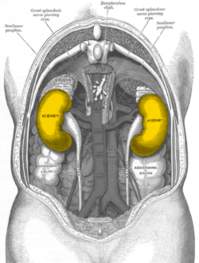Causes of Diabetes

There is no one common diabetes cause
Diabetes causes vary depending on your genetic makeup, family history, ethnicity, health and environmental factors.
There is no common diabetes cause that fits every type of diabetes.
The reason there is no defined diabetes cause is because the causes of diabetes vary depending on the individual and the type.
For instance; the causes of type 1 diabetes vary considerably from the causes of gestational diabetes.
Similarly, the causes of type 2 diabetes are distinct from the causes of type 1 diabetes.
Type 1 diabetes causes
Type 1 diabetes is caused by the immune system destroying the cells in the pancreas that make insulin. This causes diabetes by leaving the body without enough
insulin to function normally.
This is called an autoimmune reaction, or autoimmune cause, because the body is attacking itself.
There is no specific diabetes causes, but the following triggers may be involved:
- Viral or bacterial infection
- Chemical toxins within food
- Unidentified component causing autoimmune reaction
Type 2 diabetes causes
Type 2 diabetes causes are usually multifactorial - more than one diabetes cause is involved. Often, the most overwhelming factor is a family history of type 2 diabetes.
There are a variety of risk factors for type 2 diabetes, any or all of which increase the chances of developing the condition.
These include:
- Obesity
- Living a sedentary lifestyle
- Increasing age
- Bad diet
- Death rate due to diabetes
Other type 2 diabetes causes such as pregnancy or illness can be
type 2 diabetes risk factors
eath rate due to dia
The global prevalence of diabetes* among adults over 18 years of age has risen from 4.7% in 1980 to 8.5% in 2014 (1). ... Diabetes is a major cause of blindness, kidney failure, heart attacks, stroke and lower limb amputation. In 2015, an estimated 1.6 million deaths were directly caused by diabetes.
 The kidneys are two bean-shaped organs found on the left and right sides of the body in vertebrates. They are located at the back of the abdominal cavity in the retroperitoneal space. In adults they are about 11 centimetres (4.3 in) in length. They receive blood from the paired renal arteries; blood exits into the paired renal veins. Each kidney is attached to a ureter, a tube that carries excreted urine to the bladder.
The kidneys are two bean-shaped organs found on the left and right sides of the body in vertebrates. They are located at the back of the abdominal cavity in the retroperitoneal space. In adults they are about 11 centimetres (4.3 in) in length. They receive blood from the paired renal arteries; blood exits into the paired renal veins. Each kidney is attached to a ureter, a tube that carries excreted urine to the bladder. Abdominal Cavity - The abdominal cavity is a large body cavity in humans.
Abdominal Cavity - The abdominal cavity is a large body cavity in humans.









